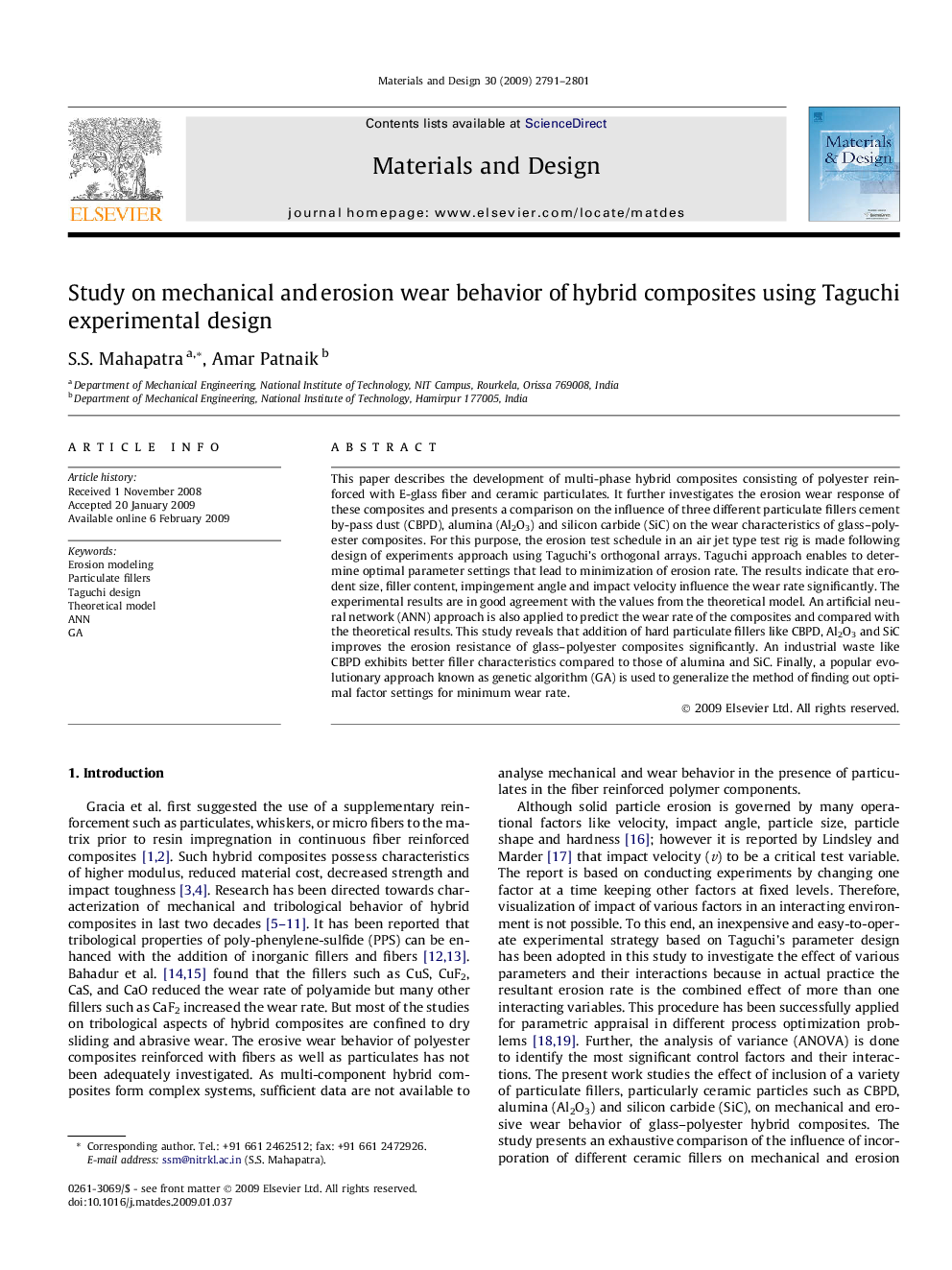| Article ID | Journal | Published Year | Pages | File Type |
|---|---|---|---|---|
| 832551 | Materials & Design (1980-2015) | 2009 | 11 Pages |
This paper describes the development of multi-phase hybrid composites consisting of polyester reinforced with E-glass fiber and ceramic particulates. It further investigates the erosion wear response of these composites and presents a comparison on the influence of three different particulate fillers cement by-pass dust (CBPD), alumina (Al2O3) and silicon carbide (SiC) on the wear characteristics of glass–polyester composites. For this purpose, the erosion test schedule in an air jet type test rig is made following design of experiments approach using Taguchi’s orthogonal arrays. Taguchi approach enables to determine optimal parameter settings that lead to minimization of erosion rate. The results indicate that erodent size, filler content, impingement angle and impact velocity influence the wear rate significantly. The experimental results are in good agreement with the values from the theoretical model. An artificial neural network (ANN) approach is also applied to predict the wear rate of the composites and compared with the theoretical results. This study reveals that addition of hard particulate fillers like CBPD, Al2O3 and SiC improves the erosion resistance of glass–polyester composites significantly. An industrial waste like CBPD exhibits better filler characteristics compared to those of alumina and SiC. Finally, a popular evolutionary approach known as genetic algorithm (GA) is used to generalize the method of finding out optimal factor settings for minimum wear rate.
